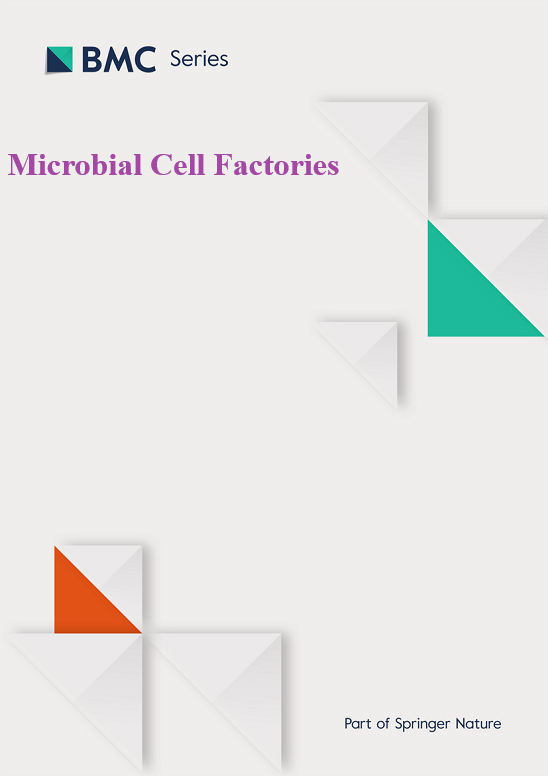优化豆类饮料乳酸发酵过程中的发酵参数--一种基于统计的发酵方法
IF 4.3
2区 生物学
Q1 BIOTECHNOLOGY & APPLIED MICROBIOLOGY
引用次数: 0
摘要
饮料市场在过去几年中发生了巨大变化。消费者对健康饮品的认识不断提高,导致传统饮料的复兴和创新饮料的诞生。各种富含蛋白质的豆类被用于制作牛奶类似物,它们也可能是制作清爽、富含蛋白质的饮料的宝贵原料。不过,迄今为止还没有此类应用推向市场,这可能是由于不愉快的感官印象,如豆类特有的 "豆腥味"。乳酸发酵已被证明是克服这一消费者接受障碍的一剂良药。在这项研究中,采用了一种基于统计学的方法来阐明发酵参数温度、接种体细胞浓度和蛋氨酸添加量对羽扇豆和蚕豆基质发酵的影响。共发现并验证了 39 个模型。这些模型大多表明,温度对减少与 "豆腥味 "有关的醛类(如己醛)和产生令人愉悦的香味化合物(如β-大马士革酮)有很大影响。积极的方面是,蛋氨酸的添加对与之负相关的硫化合物蛋醛、二甲基硫醚、二甲基二硫化物和二甲基三硫化物的影响很小。此外,在进一步的发酵中,时间也被作为一个附加参数。结果表明,菌株生长良好,在 6.5 小时内对两种底物进行强酸化(pH ≤ 4.0),24 小时后细胞数达到 9 log10 CFU/mL 以上。值得注意的是,大多数醛类(如己醛)在最初的 6-7 小时内被还原,而β-大马士革酮等宜人化合物则在后期发酵(约 24-48 小时)中达到较高浓度。在发酵参数温度、接种体细胞浓度和蛋氨酸添加量中,温度对所观察到的香气和味道活性化合物的影响最大。由于添加蛋氨酸以弥补豆科植物的典型不足并不会导致不良影响,因此应考虑在豆科植物基质中添加蛋氨酸,以提高豆科植物蛋白质的生物利用率。与 "豆腥味 "相关的醛类物质可在发酵过程中有效去除。不过,过早终止这一过程会导致无法完全产生令人愉悦的香味化合物。本文章由计算机程序翻译,如有差异,请以英文原文为准。
Optimizing the fermentation parameters in the Lactic Acid Fermentation of Legume-based Beverages– a statistically based fermentation
The market for beverages is highly changing within the last years. Increasing consumer awareness towards healthier drinks led to the revival of traditional and the creation of innovative beverages. Various protein-rich legumes were used for milk analogues, which might be also valuable raw materials for refreshing, protein-rich beverages. However, no such applications have been marketed so far, which might be due to unpleasant organoleptic impressions like the legume-typical “beany” aroma. Lactic acid fermentation has already been proven to be a remedy to overcome this hindrance in consumer acceptance. In this study, a statistically based approach was used to elucidate the impact of the fermentation parameters temperature, inoculum cell concentration, and methionine addition on the fermentation of lupine- and faba bean-based substrates. A total of 39 models were found and verified. The majority of these models indicate a strong impact of the temperature on the reduction of aldehydes connected to the “beany” impression (e.g., hexanal) and on the production of pleasantly perceived aroma compounds (e.g., β-damascenone). Positively, the addition of methionine had only minor impacts on the negatively associated sulfuric compounds methional, dimethyl sulfide, dimethyl disulfide, and dimethyl trisulfide. Moreover, in further fermentations, the time was added as an additional parameter. It was shown that the strains grew well, strongly acidified the both substrates (pH ≤ 4.0) within 6.5 h, and reached cell counts of > 9 log10 CFU/mL after 24 h. Notably, most of the aldehydes (like hexanal) were reduced within the first 6–7 h, whereas pleasant compounds like β-damascenone reached high concentrations especially in the later fermentation (approx. 24–48 h). Out of the fermentation parameters temperature, inoculum cell concentration, and methionine addition, the temperature had the highest influence on the observed aroma and taste active compounds. As the addition of methionine to compensate for the legume-typical deficit did not lead to an adverse effect, fortifying legume-based substrates with methionine should be considered to improve the bioavailability of the legume protein. Aldehydes, which are associated with the “beany” aroma impression, can be removed efficiently in fermentation. However, terminating the process prematurely would lead to an incomplete production of pleasant aroma compounds.
求助全文
通过发布文献求助,成功后即可免费获取论文全文。
去求助
来源期刊

Microbial Cell Factories
工程技术-生物工程与应用微生物
CiteScore
9.30
自引率
4.70%
发文量
235
审稿时长
2.3 months
期刊介绍:
Microbial Cell Factories is an open access peer-reviewed journal that covers any topic related to the development, use and investigation of microbial cells as producers of recombinant proteins and natural products, or as catalyzers of biological transformations of industrial interest. Microbial Cell Factories is the world leading, primary research journal fully focusing on Applied Microbiology.
The journal is divided into the following editorial sections:
-Metabolic engineering
-Synthetic biology
-Whole-cell biocatalysis
-Microbial regulations
-Recombinant protein production/bioprocessing
-Production of natural compounds
-Systems biology of cell factories
-Microbial production processes
-Cell-free systems
 求助内容:
求助内容: 应助结果提醒方式:
应助结果提醒方式:


